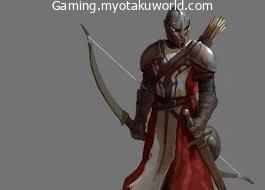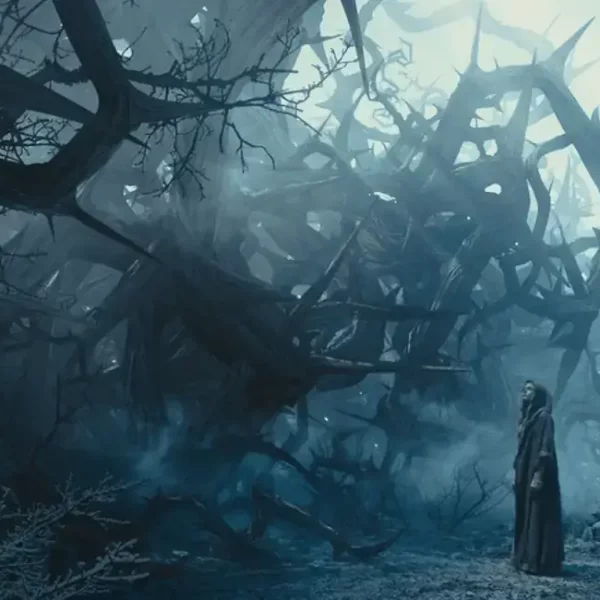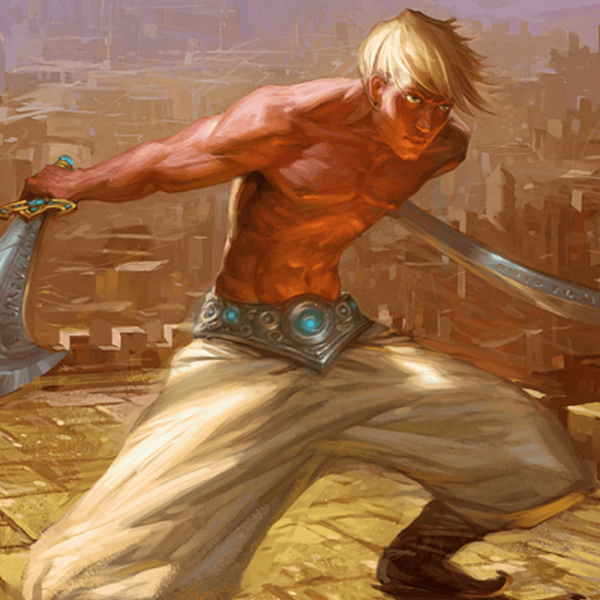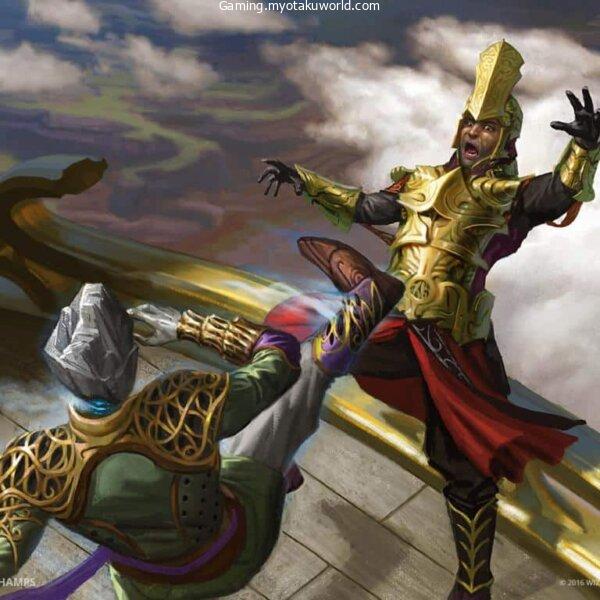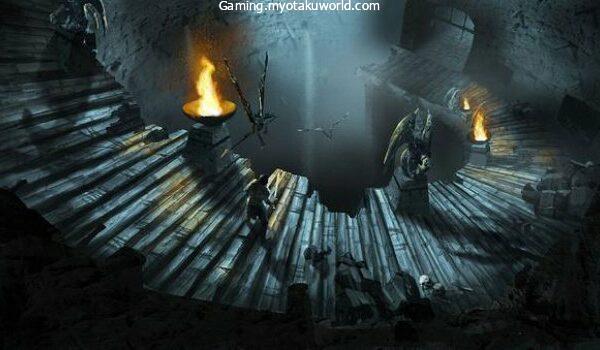The thrill of fighting is in the clashing of swords against swords. It’s easy to visualize exchanging heavy blows with your enemies if your DM is good at describing them.
When you ask people to describe “combat” or “battle”, most will say that it is two people fighting with knives in their hands.
Combat isn’t all about melee attacks. You need to be imaginative and witty, but also cautious when attacking.
Sometimes the best strategy on the battlefield is not to move too close to your enemies and deal damage from a distance. You will need a ranged weapon to accomplish this.
The longbow is here. This incredible weapon is great for ranged combat. To use the longbow effectively you will need to be skilled in its handling.
However, it can take a lot of piercing hits. The Longbow is a weapon you can use to avoid being hit by your enemies.
If you wish to use this weapon, there are some things you need to know. It is essential to understand its properties, such as its damage.
If you have any doubts about whether you should pick it up or leave a place in your inventory for it, read our Longbow 5e Guide.
- What’s the 5e Longbow?
- How to use the 5e Longbow?
- 5e Longbow Properties
- What classes can use a Longbow?
- What classes start with a Longbow?
- Are longbows magical?
- Longbow 5e: FAQs
- How damaging is a 5e longbow deal?
- What is the range for a 5e longbow?
- How much does it cost to buy a longbow?
- Can you use both a longbow and a shield simultaneously?
- Why are longbow-ranged attacks considered a disadvantage?
- What is the addition for longbow attack rolls? Strength or dexterity.
- Which is better?
What’s the 5e Longbow?

The longbow, a weapon of martial range, deals 1d8 piercing and costs 50 GP. It weighs in at about 2 lbs.
It is approximately 6 feet tall and allows the user to draw their arrow quite long. It has a slight curve and narrow limbs.
Both the longbow and its arrows are usually made of wood. The arrows’ tips are made from brass or iron and often have natural feathers.
It is a ranged weapon that allows you to attack anyone within its range (which we will discuss later in the “Range”) section.
Because it is a combat weapon, only soldiers and fighters with combat experience are able to use it. Only a few people can use the weapon effectively.
How to use the 5e Longbow?
The longbow is the same as a melee weapon when you attack. You first determine the range of your target with the longbow.
The DM will then determine which modifiers you need to add to your attacks. For example, whether you have an advantage over someone else.
The final step is to roll for your attack roll. If you’re proficient with the longbow, your attack roll will be 1d20 + Strength modifier + proficiency bonus.
You would not be able to add your proficiency bonus to the attack roll if you attack with the longbow, but you don’t have proficiency using it.
It may not seem like much, as the proficiency bonus is only a +2, but it will be a significant factor at higher levels as the proficiency bonuses increases.
A level 1 fighter with a Strength modifier (or +2) wants to use the longbow to attack an animal with an Armor Class (orAC) of 15. Because the longbow is a ranged weapon, fighters are skilled in martial weapons.
Their proficiency bonus at level 1 would be a +2. The player rolls a 1d20 attack roll, and receives a 12. The attack roll for the player would be 16 since 12 (1d20), + 2 Strength modifier + 2 Proficiency Bonus. It hits the target’s AC when 16 is reached.
5e Longbow Properties
These are its properties:
- 150-600 ft.
- Munition
- Heavy
- Two-handed
Range (150/600 feet.)

You can see that there are two numbers to refer to the range of a longbow. The parenthesis contains the normal range of a longbow (150 ft.), while the second number refers to the longbow’s long-range (600ft.).
The normal range is the distance you can reach to attack any creature that is within 150 feet of you. Each square tile on battle maps is typically 5 feet in size, so you can attack any creature within 30 squares of you. This is a lot!
You can still attack creatures further than 150 feet (or 30 squares). You will be at a disadvantage when you roll your attack roll.
This means that you will need to roll 2d20 rather than a 1d20 and that you must choose the smaller number from the two dice.
If you are proficient in the weapon, the chosen die will be your attack roll plus your Strength modifier.
A hostile creature that is not incapacitated can see you within 5 feet of you could also be considered a disadvantage in a ranged attack.
If you prefer to use ranged attacks against foes, avoid them getting close to you. Otherwise, your attacks will be less effective.
Your target is 80 feet away from you, which is an example of normal ranges. You make an attack roll as normal, since the target’s distance is not greater than 150 ft.
If your target is more than 200 feet away, you will be penalized on your attack roll. When you roll for it, you will roll 2d20.
Let’s suppose you have rolled a 17. If this is the case, your attack roll will be the 8 since it is the smaller of the two rolls.
The longbow’s range simply means you can’t attack a creature more than 600 feet. This is 120 squares according to standard battle maps.
The player should not be allowed to attack further than this.
Munition
The longbow can only be used for ranged attacks if you have the ammunition (i.e. Longbow arrows You cannot use the longbow arrows in a ranged attack if you don’t have one.
You also have to use one of your ammunition when you attack. When you plan to use the longbow, it is important to have enough ammunition.
If you run out of arrows, always remember to visit the fletcher in your locality.
Part of the attack is picking an arrow out of its container to make a ranged attack.
After the battle is over, you have a minute to search the battlefield for half the arrows that you used in the fight.
If you use 20 arrows in the fight, you can search for 10 more by searching the area for about a minute.
If the worst happens and your enemy is close, your longbow can be used to make a melee attack. It is considered an improvised weapon once it has been completed.
The Player’s Handbook page 148 states that ranged weapons can be used as an improvised weapons to deal 1d4 damage.
This method of attacking does not allow you to add your proficiency bonus to attack rolls.
Heavy
Heavy weapons are too heavy and bulky for small and tiny creatures to use effectively. This means that if a longbow-wielding creature attempts to attack with a longbow, it will result in a disadvantage on its attack rolls.
This means you will roll 2d20 rather than 1d20 to attack your creature. You must choose the lower of the two rolls. Below are the races that can be classified as Tiny and Small creatures.
| Race | Size | Source |
| Custom Lineage | Small/Medium | Tasha’s Cauldron of Everything page 8 |
| Kobold | Small | Volo’s Guide to Monsters page 119 |
| Halfling (including subraces). | Small | Page 26 of the Player’s Handbook |
| Goblin | Small | Volo’s Guide to Monsters page 119 (for Forgotten Realms campaign setting).Page 16 of the Guildmaster’s Guide To Ravnica (for Ravnica campaign setting).Eberron: Rising From the Last War, page 26 (for Eberron campaign settings) |
| Gnome (including all subraces). | Small | Page 35 of the Player’s Handbook |
Two-handed
To effectively use a weapon, you need both hands. The longbow is one such weapon. You will need two hands to properly use the longbow, and also make ranged attacks.
You cannot use the longbow as a shield when attacking with a single-handed weapon. You don’t need to have two hands to hold a longbow. One hand is sufficient.
You cannot use the longbow to make a ranged attack if you only have one hand. You cannot use the longbow to make a ranged attack if you are holding it with one hand and something else on the other.
If the object is a weapon you can place it in your backpack. If you’re in combat, however, you could lose your action. You could also drop it completely, as it wouldn’t warrant action.
What classes can use a Longbow?

While anyone can use a longbow effectively, not all are proficient. Here is a list that shows how proficiently and effectively a longbow can be used by different classes.
These classes are all proficient with longbows because they are skilled with martial weapons. No class has been proficient with the longbow by itself.
- Barbarian. (Player’s Handbook page 46).
- Fighter (Player’s Handbook page 70)
- Paladin (Player’s Handbook page 82).
- Ranger (Player’s Handbook, page 89)
Only skilled fighters will be able to use the longbow, as expected. bards and sorcerers do not specialize in martial combat so it makes sense that they would not be proficient at using the longbow.
The spellcasting ability can be obtained by the Fighter class through the Eldritch Knight subclass.
However, the Paladin, Ranger, and Paladin classes will gain their spellcasting abilities when they reach level 2.
What classes start with a Longbow?
Only two out of the four classes who are proficient in longbow use can start with a longerbow. Below is a list of them.
- Fighter (chain mail, leather armor, longbow, and 20 arrows + one martial weapon and a shield; two martial weapons).
- Ranger: A longbow and 20-arrow quiver.
The Fighter class can choose to start with a longbow in one of three ways. They can have leather armor, a longbow, and 20 arrows instead of chain mail.
A second option is to choose a longbow or shield as their martial weapon of choice. This is not recommended, as shields can be useless if you intend on using a longerbow.
Another option is to pick at least one longbow for your martial weapon of choice when choosing the “two martial arms” option.
The Ranger class is designed for longbow use. The longbow is the first weapon they use, and the quiver contains 20 arrows.
If the ranger selects Archery as their Fighting Style, this weapon will work well. Archery Fighting Style gives you a +2 bonus to your attack roll for attacks with ranged weapons.
Are longbows magical?
Non, not usually. Although longbows can be used as martial weapons, they are still considered mundane objects.
While a few people are able to use the longbow with proficiency, it does not make it magic. A longbow is easy to find, especially in a large city.
There are magic longbows that can be found, as you’ll see in the table below. If the column is “A”, it means that the item needs attunement.
If not, it is otherwise.
| Item Title | Rarity | A. | Source |
| +1 Longbow | Uncommon | No | Dungeon Master’s Guide, page 213 |
| +2 Longbow | Rare | No | Dungeon Master’s Guide, page 213 |
| +3 Longbow | Very rare | No | Dungeon Master’s Guide, page 213 |
| Longbow for the Corpse Slayer | Rare | Yes | Page 266 of Explorer’s Guide to Wildemount |
| Drow +1 Longbow | Unknown | No | Monster Manual, page 126 |
| Hellfire Longbow | Uncommon | No | Baldur’s Gate, Descent Into Avernus page 223 |
| The Longbow of Certain Death | Rare | No | Page 270 of the Explorer’s Guide to Wildemount |
| Longbow of Warning | Uncommon | Yes | Dungeon Master’s Guide, page 213 |
| Vicious +1 Longbow | Unknown | No | Acquisitions Incorporated page 149 |
| Vicious Longbow | Rare | No | Dungeon Master’s Guide, page 209 |
Longbow 5e: FAQs
How damaging is a 5e longbow deal?
It does 1d8 piercing injury.
What is the range for a 5e longbow?
It has a 150 ft. range and a 600 ft. range. However, if you are more than 150 feet from your target, you will be at disadvantage. When you roll for your attack roll you roll 2d20. Choose the lower number from the two. A ranged attack cannot be made further than 600 feet.
How much does it cost to buy a longbow?
They cost 50 GP and are about 2 lbs in weight. You would pay 1 gp for 20 arrows.
Can you use both a longbow and a shield simultaneously?
You cannot. The longbow is a two-handed weapon. This means that you must use both your hands to make an attack. To use a shield, you must have one hand free.
Why are longbow-ranged attacks considered a disadvantage?
If you go beyond the 150-foot range of your longbow, you will be penalized on your attack rolls. You also have a disadvantage if you make a ranged strike while a hostile creature isn’t incapacitated, and is within 5 feet of you.
What is the addition for longbow attack rolls? Strength or dexterity.
The longbow isn’t a finesse weapon. You need to add your Strength modifier (even if it’s a negative number) to your attack roll.
Which is better?
Longbows inflict 1d8 piercing injury, while heavy crossbows inflict 1d10 piercing injuries. The heavy crossbow does more damage but has a shorter range (100/400 feet). They also have the “Loading” property which says that you can only fire one round of ammunition at a time, regardless of how many attacks you are able to make. It all depends on what you are looking for.
